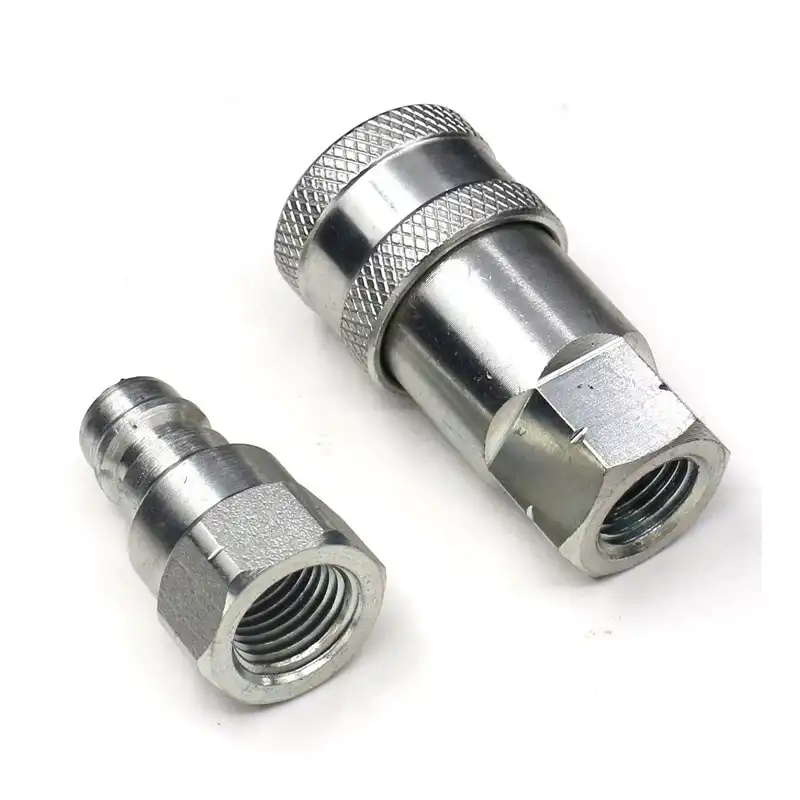Traditional threaded fittings can become a bottleneck in your workflow. Wrenching, tightening, and disassembling connections eat into valuable time. Quick connect hydraulic hose fittings offer a smarter solution, enabling rapid and tool-less connection and disconnection of hoses.
In the world of hydraulics, where efficiency and speed are paramount, quick connect hydraulic hose fittings offer a game-changing solution. Unlike traditional threaded fittings that require wrenches and time-consuming assembly, quick connects enable rapid and tool-less connection and disconnection of hoses. This translates to increased productivity, simplified maintenance, and enhanced safety within your hydraulic operations.
Standard ferrules are typically made from stainless steel, but for specific applications, you might need customization. This could involve:
While standard sizes cater to most hoses, customization allows for:
Standard ferrules have set pressure limitations. Customization can provide:
Standard ferrules are unmarked, but customization can add:

Hydraulic hose ferrules are essential components that secure hydraulic hoses to fittings, preventing leaks and ensuring a safe and reliable connection.
Hydraulic systems are the lifeblood of many industrial machines, from construction equipment and agricultural machinery to factory automation and assembly lines.
Mobile equipment like cranes, forklifts, and mining vehicles rely on hydraulics for steering, braking, lifting, and powering various functions.
Hydraulics are used extensively in excavators, loaders, backhoes, and other construction equipment to power actuators, lift heavy loads, and operate various attachments.
Modern agricultural equipment like tractors, harvesters, and plows utilize hydraulics for lifting, steering, operating implements, and controlling attachments.
Quick connect hydraulic hose fittings, also sometimes called quick disconnect or quick release fittings, are a type of hydraulic hose fitting designed for speed and ease of use. Unlike traditional threaded fittings that require wrenches and time-consuming assembly, quick connects enable rapid connection and disconnection of hoses without any tools.
Quick connect hydraulic hose fittings, also sometimes called quick disconnect or quick release fittings, operate using a two-part design for rapid and tool-less connections and disconnections. Here’s a breakdown of the components and the connection process:
The Two Parts:
Coupler: This half typically houses a valve mechanism that controls fluid flow. It often has a dust cap to protect the internal mechanism from contamination when disconnected. The coupler might also have a locking sleeve or latch.
Nipple: This half connects directly to the hydraulic hose and inserts into the coupler. It may feature a sealing mechanism (like an o-ring) to ensure a leak-proof connection. Some nipple designs also have a locking feature that engages with the coupler’s mechanism.
The Connection Process:
Insertion: Insert the nipple end of the hose assembly (with the sealing mechanism) straight into the coupler.
Locking: Depending on the specific fitting design, a locking mechanism on the coupler (sleeve or latch) needs to be pushed or pulled into place to secure the connection. This ensures the nipple is held firmly within the coupler and prevents accidental disconnection.
Flow Activation: Once locked, the valve mechanism within the coupler typically opens automatically, allowing unrestricted flow of hydraulic fluid through the connected hose.
The Disconnection Process:
Unlocking: The locking mechanism on the coupler (sleeve or latch) needs to be disengaged (pushed or pulled) to release the nipple.
Valve Closure: Disengaging the lock usually triggers the valve mechanism within the coupler to close automatically. This stops the flow of hydraulic fluid and prevents spills.
Withdrawal: With the valve closed and the lock disengaged, you can safely pull the nipple straight out of the coupler.
Key Points:
By using quick connect hydraulic hose fittings, you gain significant advantages in terms of:
These fittings find application in various industries due to their ease of use and time-saving benefits.